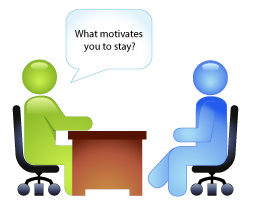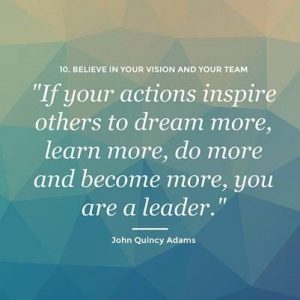COACHING OUR WAY THROUGH ANXIETY
 The past few years have brought so many anxiety-producing unknowns into our lives that it’s becoming difficult to remember when we weren’t dealing with these stressors. Now, it’s like we can see some light at the end of the tunnel and can finally begin to get a sense of normalcy into our lives, but we still have an uphill battle ahead of us. For many, it’s causing frustration and confusion and adding to an already anxious situation.
The past few years have brought so many anxiety-producing unknowns into our lives that it’s becoming difficult to remember when we weren’t dealing with these stressors. Now, it’s like we can see some light at the end of the tunnel and can finally begin to get a sense of normalcy into our lives, but we still have an uphill battle ahead of us. For many, it’s causing frustration and confusion and adding to an already anxious situation.
By now, you’ve probably heard the phrase, “you can’t control events, but you can control how you respond to them.” Easier said than done, right? How do you get started when you’re already feeling overwhelmed? Working with a coach helps you build strategies to deal with the stressors of whatever life is throwing at you right now, whether it’s anxiety over waiting for the vaccine, job challenges or uncertainty about the future. Here are some examples of what a coach can teach you:
- How to increase your emotional resilience.
- How to shift yourself out of anxiety and into a more proactive mental state.
- How to effectively handle situations that are out of your control.
- How to deal with both the mental and physical reactions of anxiety.
Often, having a strong listener on your side and ready to help can make a huge difference. A coach can provide you with mental exercises to turn to during stressful events, help you track your progress, hold you accountable for your goals and provide needed social support.
Anxiety focuses on what can go wrong, while hope focuses on what can go right and opportunities despite present circumstances. If you’re looking for someone to help with your anxiety during this difficult time, Leah M Joppy and Associates is ready to help. You don’t have to deal with this this alone. Call us at 301-670-0051 or email leah@lmja.com to learn more.
Reengaging Team Members
 Are there any leaders out there who haven’t encountered employee disengagement at one point or another? If you’re in a management position, you can probably name at least one or two instances off the top of your head. However, over the last two years, when offices abruptly closed and many employees had to transition to work-from-home life, addressing disengagement became a much more complex problem. And while a hybrid model of work has now become the norm for so many organizations, it brings on a whole new set of challenges when addressing employee disengagement.
Are there any leaders out there who haven’t encountered employee disengagement at one point or another? If you’re in a management position, you can probably name at least one or two instances off the top of your head. However, over the last two years, when offices abruptly closed and many employees had to transition to work-from-home life, addressing disengagement became a much more complex problem. And while a hybrid model of work has now become the norm for so many organizations, it brings on a whole new set of challenges when addressing employee disengagement.
For organizations that are new to the hybrid model, disengagement can rear its head in a variety of forms. For example, team members can feel out of the loop in terms of communication and resources or they may be struggling with work/life balance. They may also feel discouraged by a lack of company culture or difficulty collaborating with team members. What are some of the red flags to watch out for when it comes to employee disengagement? Here are a few examples:
- Withdrawal from any non-necessary activities or conversations
- Poor communication and lack of participation
- Breaks from routine (ie: a typically vocal person no longer speaks up in meetings, a punctual person is chronically late or misses deadlines)
- Apathetic approach to meetings, projects, communication, etc.
- Rudeness and curtness with coworkers and clients
According to a recent workplace study from Gallup, 51% of workers are “not engaged,” meaning they are psychologically unattached to their work or company. And many of them feel they have more options now – we’re all too familiar with the term “Great Resignation” and the impact it’s had on organizations. With all of the challenges leaders are facing trying to navigate a post-pandemic workplace, problems with disengaged employees can sneak up quickly and snowball into major issues. That’s where Leah M Joppy and Associates can help. We can get to the root causes of WHY team members are feeling disengaged and work with you to come up with ideas to address these problems quickly.
When it comes to employee disengagement, it’s so important to look for solutions right away, rather than wait until productivity declines and turnover increases. Call Leah M. Joppy and Associates at 301-670-0051 or email us at leah@lmja.com and let’s start tackling any disengagement issues now!
The Value Of A “Stay Interview”
 Keeping employees engaged pre-pandemic was hard enough, but for many leaders, it can seem like an uphill battle in our new work-from-home/hybrid model world. It’s important to recognize the signs of employee disengagement early, so effective action can be taken. Whether it’s improved communication, providing clearer opportunities for job progression or taking time out to just have some team building fun, improving employee engagement is an investment that pays off in so many ways.
Keeping employees engaged pre-pandemic was hard enough, but for many leaders, it can seem like an uphill battle in our new work-from-home/hybrid model world. It’s important to recognize the signs of employee disengagement early, so effective action can be taken. Whether it’s improved communication, providing clearer opportunities for job progression or taking time out to just have some team building fun, improving employee engagement is an investment that pays off in so many ways.
Reasons for disengagement are as varied as the people in your organization. That’s why taking the time to talk to team members and really listen to their concerns is so important. There’s an underutilized, but powerful tool called the “Stay Interview,” which can really help leaders gather important data about employee morale and engagement. In the book, “Love ‘Em or Lose ‘Em: Getting Good People to Stay” by Beverly Kaye and Sharon Jordan Evans, they list a number of thought-provoking “stay interview” questions that really provide valuable insight. Here’s a sample:
- What will keep you here?
- What might entice you away?
- What about your job makes you jump out of bed in the morning?
- What makes you hit the snooze button?
- What one change in your current role would make you consider leaving this job?
- If you had a magic wand, what would be the one thing you would change about this department, team, organization?
- As your manager, what could I do a little more of or a little less of?
- If you had to go back to a position in your past and stay for an extended period of time, which one would it be and why?
Once you’re armed with the information above, now what? How do you even begin to develop and implement innovative ideas that actually improve employee engagement? That’s where working with a coach, like Leah M Joppy and Associates, can help. We can collaborate with you to look at areas where engagement is low, establish where improvements can be made and come up creative solutions that will increase team members’ engagement and morale. There’s no better time than the present to get started! Call us at 301-670-0051 or email us at leah@lmja.com
Struggles of Managing Offsite Employees
The past year has continued to rock the way we do business and forced us to pivot yet again as new and unexpected challenges were thrown our way. One of the biggest areas where many leaders are still struggling is managing offsite employees. Remote and hybrid teams are here to stay and leading them takes a different set of skills.
What are some of the top issues managers report when it comes to leading remote employees? Here’s a look at four of the top struggles. Do any sound familiar to you?
- Internal Communication Problems: There’s no question that communication is a huge issue when managing remote employees. According to a study by Gallup, 71% of remote employees reported that they’re not actively engaged with their business. And 85% reported the communication they receive on the job isn’t enough.
- Supporting Employees From a Distance: The relationships you developed working in an office can be hard to maintain when you’re staring at each other on a screen every day. Some workers are more forthcoming with the challenges they’re experiencing on the job or at home, while others are more private and many be struggling in silence. Some of the biggest struggles workers report is loneliness, collaboration difficulties, distractions at home and staying motivated. Employee wellness has become a huge issue for organizations.
- Lack of a Company Culture: Those face-to-face interactions we were so used to a couple years ago are quickly becoming a thing of the past. It’s also made building and maintaining company culture even more challenging. A lack of company culture can mean there’s very little comradery, workers may not feel heard or recognized for a job well done and so much more.
- Tracking and Measuring Performance: Managers are faced with two big challenges when it comes to tracking performance: making sure employees are completing their work and that they’re using their time efficiently and appropriately.
Organizations also report challenges with scheduling and time zone issues, onboarding new remote workers and developing and maintaining trust.
The struggles that arise from managing a team while you’re physically apart can ruffle the feathers of even the most seasoned leader. What challenges are you experiencing with leading a remote team? How have issues changed or developed over the last year? Leah M Joppy and Associates can work with you to identify challenges, develop a practical and reasonable action plan and collaborate with both leaders and employees to implement it. Follow through is also important, so we continue to check in on what’s working, what’s not and what we can do to fix it. Call us at 301-670-0051 or email leah@lmja.com to learn more.
What To “Do” and “Not Do” When Managing Remotely
 From Zoom “fatigue” to trying to onboard new employees from a distance, the challenges of leading offsite employees can feel vast and complicated. Just when you think you get one area figured out, another issue pops up and needs attention. We touched on a few common struggles in our previous article, but how do you start to address them? Ignoring the issues or telling yourself that “things will get better with time” can ultimately lead to higher employee turnover, especially in today’s tight labor market. A proactive approach and implementing improvements not only keep your organization moving forward, but also shows your remote team members that you’re engaged in their well being.
From Zoom “fatigue” to trying to onboard new employees from a distance, the challenges of leading offsite employees can feel vast and complicated. Just when you think you get one area figured out, another issue pops up and needs attention. We touched on a few common struggles in our previous article, but how do you start to address them? Ignoring the issues or telling yourself that “things will get better with time” can ultimately lead to higher employee turnover, especially in today’s tight labor market. A proactive approach and implementing improvements not only keep your organization moving forward, but also shows your remote team members that you’re engaged in their well being.
Let’s start with a few of the basics. We’ve outlined a few “dos and don’ts” below. Maybe you’re already using some of them or perhaps they’re a good reminder of where you need to improve:
- DO set immediate and clear expectations. And make sure everyone knows what they are!
- DO schedule regular team meetings and make them a priority (no regular cancellations, please).
- DO engage directly with employees as often as possible.
- DON’T just have a communication strategy in place. Document it and share it. Everyone needs to be on the same page.
- DON’T just encourage feedback, make it possible. And listen to it!
- DON’T micromanage and make employees feel like they’re not trusted.
- DO have an open-door policy and set aside time for one-on-one conversations.
It’s easy to say “communicate more with your employees” or “set clear expectations”, but how do you get started when you’re already feeling overwhelmed? That’s where working with a coaching team like Leah M Joppy and Associates can help. Maybe you’ve established a routine that your team is comfortable with, but you’re struggling to improve your company culture. Or perhaps your regular team meetings are running like clockwork, but you’re having difficulty with one-on-one communication. We can help you figure out your primary challenges and work with you and your team to make remote working a less stressful and more productive experience for all!
Ready to get started for 2022? Call us at 301-670-0051 or email us at leah@lmja.com.
What Makes A Leader Effective?
 There are so many differences between being a boss and being a leader. Bosses command, while leaders influence. Bosses discipline, but leaders act as a mentor. That’s just the beginning. Strong leadership matters and it’s the backbone to every successful department. Leaders are responsible for more than just delegating tasks and monitoring employees’ progress. To be effective in this role, true leaders must understand each staff member’s overall goals, strengths and weaknesses and then use this information to build a strong team.
There are so many differences between being a boss and being a leader. Bosses command, while leaders influence. Bosses discipline, but leaders act as a mentor. That’s just the beginning. Strong leadership matters and it’s the backbone to every successful department. Leaders are responsible for more than just delegating tasks and monitoring employees’ progress. To be effective in this role, true leaders must understand each staff member’s overall goals, strengths and weaknesses and then use this information to build a strong team.
Our last article looked at why leadership is important and what can happen when strong leadership is lacking. But have you ever stepped back and thought about all the components that comprise an effective leader? There are many lists out there outlining what it takes, but when it comes down to it, they all focus on these 6 core strengths:
- Communication
- Cultural Competence (the ability to work with people from other countries and cultures)
- Flexibility
- Vision
- Empathy and Emotional Intelligence
- Personal Skills (areas such as authenticity and trustworthiness)
When you look at the leadership style within your department, how would you rate the level of strength in these areas? It’s important to take a step back and look at leadership strengths and weaknesses. Frequent changes in focus and conflicting priorities can leave staff feeling stressed and anxious. That’s certainly not the environment you want. Working with a coach can help you identify areas that need improvement, develop skills that leaders can begin using immediately and learn techniques to develop a stronger, more cohesive team. The benefits are numerous: happier, more loyal employees, increased efficiency and greater productivity and reduced turnover. And who doesn’t want that?
We are having fantastic success with Gallup’s Strenthsfinder. Teams are becoming stronger because members discover how and where to maximize their strengths to accomplish the organization’s mission. If you want to improve leadership skills within your department and cultivate new leaders who will inspire and motivate, Leah M. Joppy and Associates is ready to help. Call us at 301-670-0051 or email us at leah@lmja.com.
Leadership Continuity
 When it comes to workplace satisfaction, employees continually rate “strong leadership” among one of the most important factors. However, according to the “Top Management and Performance Challenges Facing Multiple Federal Agencies” report released by the Council of the Inspectors General, providing leadership continuity is a key area of concern in the coming years. The report states that, “High turnover of leadership positions, a large number of vacant key leadership positions, and an abundance of executive and senior management employees eligible to retire in the next 5 years can affect Federal agencies’ ability to meet mission-critical objectives and statutory responsibilities.”
When it comes to workplace satisfaction, employees continually rate “strong leadership” among one of the most important factors. However, according to the “Top Management and Performance Challenges Facing Multiple Federal Agencies” report released by the Council of the Inspectors General, providing leadership continuity is a key area of concern in the coming years. The report states that, “High turnover of leadership positions, a large number of vacant key leadership positions, and an abundance of executive and senior management employees eligible to retire in the next 5 years can affect Federal agencies’ ability to meet mission-critical objectives and statutory responsibilities.”
The FDIC is a stark example: 60% of FDIC executives and managers are eligible to retire within the next 5 years. That’s a lot of experience and knowledge that could potentially be leaving. And so many other agencies are facing an immediate crisis of leadership. The Treasure Department has cited immediate concerns over leadership positions in its Office of Terrorism and Financial Intelligence that have remained unfilled. These are just a few examples of why identifying and developing future leaders through effective and robust training programs is so important.
Why Is Strong Leadership Important? It’s such an important question, but when we get bogged down by the day to day of just trying to get everything done, it often goes unanswered. After all, if projects are being accomplished on time, that’s all that really matters, right? Leadership is more than just making sure employees are churning out work. Strong, effective leadership is needed to attract, inspire, and ultimately retain team members.
Leadership can come naturally for some, but it’s not necessarily innate. Like most roles, it takes development and training to bring out the best in current and future leaders. One of the most effective ways to implement leadership development is through coaching. Coaches can help individuals hone in on their distinct leadership style, learn how to best manage different personalities, deal with conflict and become more confident in their role. And that’s just the start.
Does your organization have a plan in place to develop your future leaders? Leah M Joppy and Associates can work with you to cultivate strong, consistent leadership within your agency. Call us at 301-670-0051 or email leah@lmja.com to learn more.
The Value in Training Employees
 When the batteries die in your remote control, do you just throw it in the garbage and buy a new one? No, of course not! You replace the batteries, which enables you to save money and enjoy better and faster service from your remote. The same can be said for providing training for existing workers. It’s so much more cost efficient to consistently train the employees you already have than having to find new workers.
When the batteries die in your remote control, do you just throw it in the garbage and buy a new one? No, of course not! You replace the batteries, which enables you to save money and enjoy better and faster service from your remote. The same can be said for providing training for existing workers. It’s so much more cost efficient to consistently train the employees you already have than having to find new workers.
When it comes to training existing team members, many agencies come up with every excuse in the book not to move forward. And it’s one of the costliest mistakes they can make. Here are just some of the top reasons why so many agencies don’t take the time to train workers:
- Training takes a lot of time
- Training is expensive
- Fear of ineffective training or lack of a standardized training program
- Fear of workers leaving after they’ve received training
So many agencies are ignoring the real question: what is the cost of not training employees? It’s easy to see training as an expense and not as an investment. Failing to continually train workers leads to a host of issues, including increased security risks, decreased efficiency, more mistakes and a lack of motivation. Untrained and unhappy employees who feel like they’re not building their skills are more apt to become frustrated and may start looking for employment elsewhere. And we all know how costly turnover can be!
On the flipside, training and development programs include a host of benefits, including enhancing employee performance, boosting employee productivity and improving department culture. But getting started is the first (and most challenging!) step. Don’t let the old excuses hold you back. Leah M Joppy and Associates can work with you to create consistent training programs or improve the ones you may already have in place. Call us at 301-670-0051 or email leah@lmja.com to learn more.
Providing Adequate Training
 When was the last time you provided training to your existing team members? Some of you may be able to answer this question quickly – “oh, we did some training and development about six months ago.” But if you’re like most, you’re probably scratching your head trying to remember the last time any training took place. It’s a common issue. According to the “Top Management and Performance Challenges Facing Multiple Federal Agencies” report released by the Council of the Inspectors General, providing adequate training is a key area of concern.
When was the last time you provided training to your existing team members? Some of you may be able to answer this question quickly – “oh, we did some training and development about six months ago.” But if you’re like most, you’re probably scratching your head trying to remember the last time any training took place. It’s a common issue. According to the “Top Management and Performance Challenges Facing Multiple Federal Agencies” report released by the Council of the Inspectors General, providing adequate training is a key area of concern.
Where are we seeing this? It seems to run rampant. The Department of State (DOS) reported that under qualified staff developed, “deficient performance work statements that led to multiple poorly designed projects and millions of dollars in wasted funds.” The Defense Intelligence Agency (DIA) stated that sensitive information was put at risk because they had failed to provide employee training programs. Those are just a few sobering examples. Quality training is such an integral workplace component. Here are just a few ways reasons why:
- Addresses Employee Weaknesses: Training programs enable you to strengthen employees’ existing skills and address areas that need improvement. Efficiency and productivity are increased. Employees can work better independently and in teams without constant supervision.
- Improves Employee Job Satisfaction: No one likes to feel confused and out of the loop when they’re at work. Consistent training builds skills, knowledge and confidence. It also makes employees feel like they’re valued and supported. If an agency is willing to make an investment in their workers, those workers are probably less likely to jump ship for another job.
- Eliminates Wasted Money and Addresses Security Concerns: As mentioned earlier, a few agencies reported poorly designed projects due to a lack of proper training, as well as sensitive information put at risk. The Defense Intelligence Agency specifically noted that providing a standardized training program could help them in “identifying, assessing and mitigating counterintelligence risks to mission-critical acquisitions.”
Don’t make the mistake of forgetting about training or putting it on the backburner. Agencies must ensure that workers are continually kept up to date with policies, processes and procedures. A structured training program ensures that employees have consistent learning opportunities and a chance to build knowledge and skills. Leah M Joppy and Associates can work with you to look at your current training programs, what’s working and what isn’t and address and fix any weaknesses. Call us at 301-670-0051 or email leah@lmja.com to learn more.
Hiring In Today’s Market Requires Innovative Strategies
 When it comes to hiring highly specialized workers, are you facing challenges finding strong candidates for open positions? If so, you’re not alone. According to the “Top Management and Performance Challenges Facing Multiple Federal Agencies” report released by the Council of the Inspectors General, recruiting and retaining highly skilled staff is a key area of concern. Several agencies reported that they’ve faced difficulties finding and retaining people with the right skills, abilities and knowledge to fill vacant positions. One of the main reasons cited is competition from the private sector and the higher salaries they can often offer sought-after candidates.
When it comes to hiring highly specialized workers, are you facing challenges finding strong candidates for open positions? If so, you’re not alone. According to the “Top Management and Performance Challenges Facing Multiple Federal Agencies” report released by the Council of the Inspectors General, recruiting and retaining highly skilled staff is a key area of concern. Several agencies reported that they’ve faced difficulties finding and retaining people with the right skills, abilities and knowledge to fill vacant positions. One of the main reasons cited is competition from the private sector and the higher salaries they can often offer sought-after candidates.
It can certainly seem like highly skilled workers are in the driver’s seat these days. When it comes time for an interview, these candidates are interviewing YOU as well as you interviewing them. Just like you want to know about their experience and background, they want to know what it’s like to work for your department. Here are a few areas they may be interested in and you should be prepared to answer:
- Potential for growth: Highly skilled candidates want to know why they should change jobs and how making a change is going to benefit them, particularly in relation to the growth of their career.
- Department culture: Candidates want to know that they’re going to be a good fit for the overall culture of the department and their work team.
- Flexibility: In a post-COVID world, workers are more interested in ever in areas such as ability to work from home, work/life balance and other employee perks.
However, be careful not to oversell! Yes, it’s important to outline the perks, but it’s also essential for candidates to have an understanding of the challenges that may come with the position. This allows the candidate to make a fully informed decision and cuts down on the likelihood of high turnover.
In today’s competitive hiring market, it’s essential that agencies develop innovative strategies and take advantage of available employee incentives to attract and retain the highest level of talent. Leah M Joppy and Associates can work with you on ways to “sell” your open job opportunities, as well as outline and communicate the benefits of working for your department. Call us at 301-670-0051 or email leah@lmja.com to learn more.
